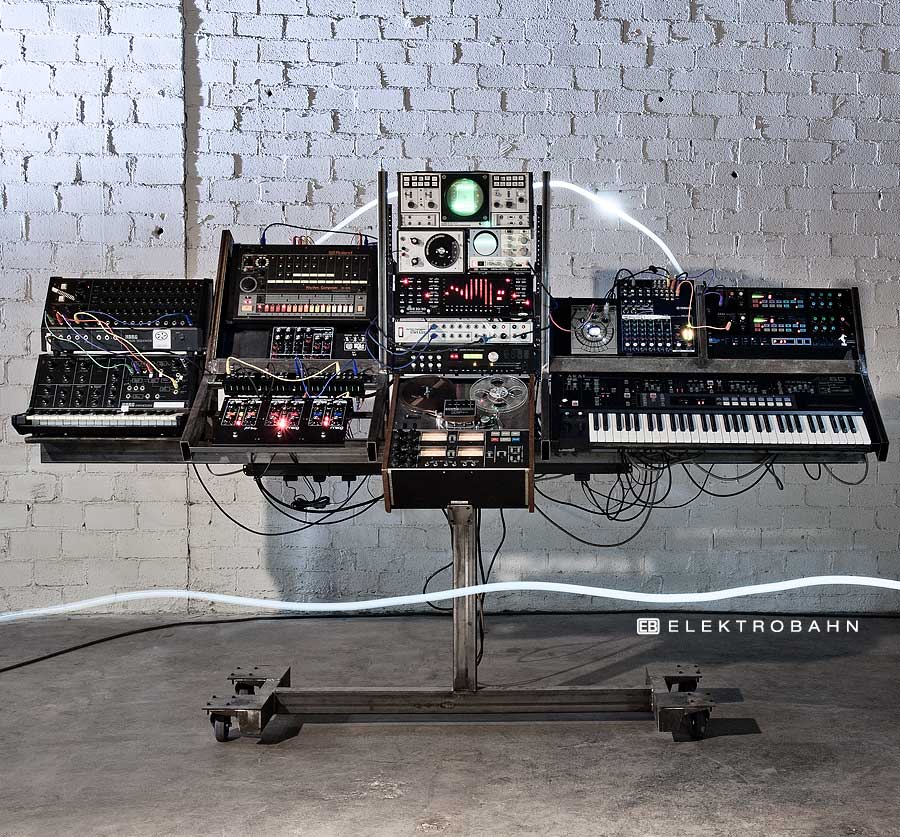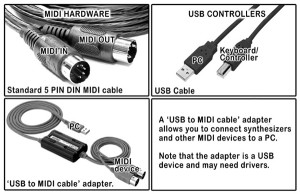We’ve collected a few videos from Ableton about using MIDI in Live. From its 1980’s origins as a technical standard allowing electronic instruments to communicate with one another, MIDI has also become a versatile technology for sequencing and manipulating virtual instruments. We’re going to look at some killer tips and tricks for mastering MIDI in Live.
MIDI – Established in 1984, the Musical Instrument Digital Interface is a musical device communication standard that describes a protocol, digital interface, and connectors which allow a wide variety of electronic musical instruments, computers and other related devices to connect and communicate with one another. A single MIDI link can carry up to sixteen channels of information, each of which can be routed to a separate device. Devices are connected to each other via a 5-pin DIN MIDI cable or more common now with standard USB cables. Devices can connect to each other using 3 port types: MIDI In, MIDI Out, and MIDI Thru where MIDI In receives note and control data, MIDI Out sends it, and MIDI Thru replicates incoming data to downstream devices. MIDI can send an incredible variety of data from note on/off, velocity, and volume to patch changes and note data from keyboards and other MIDI devices to DAW’s such as Ableton Live. Note data, once captured, can be edited even so far as changing the original sounds (patches) to other sounds from other MIDI devices and computers. Although MIDI is an incredibly complex technical topic, in its simplest form one can plug a cable from MIDI Out to MIDI In and fire notes from both the played and data-receiving device(s) to create rich textures and multilayered sounds. In addition to the original MIDI devices: keyboards, synthesizers, and drum machines, the technology has now spread to live performance MIDI controllers utilizing pads, faders, and knobs, to woodwind instruments and MIDI guitars and pedalboards, and stage lighting. Modern audio interfaces all include a MIDI interface connection for direct capture into the DAW and output from it to attached MIDI devices.
Before we move on, we should point out that the tips in this article are mostly at an intermediate level – if you need an introduction or refresher to MIDI in Live, check out these tutorial videos.
First up, Certified Trainer Paul Laski of Icon Collective looks at resampling MIDI. Live comes with a number of cool MIDI effects, allowing you to easily shift pitches, make chords and arpeggios, and more. But what about printing these effects to clips? Learn how in the video below:
Ableton Certified Trainer Paul Laski on Resampling MIDI Tracks
Next, another tutorial from Paul demonstrates a quick tip for rounding off your MIDI loops so that they’re perfectly in time, as you make them. Never stop the music while layering on new clips:
Ableton Certified Trainer Paul Laski on Rounding Off MIDI Loops
For a themed musical interlude, listen to Ford & Lopatin’s retro-futuristic “Too Much MIDI (Please Forgive Me)”:
Too Much MIDI - Ford & Lopatin
Live 9 introduced a number of new editing options for MIDI Clips. If you aren’t familiar with them or don’t remember them all, Dubspot’s Evan Sutton provides an excellent rundown of the features below:
New Ableton Live9 MIDI Editing Features by Dubspot's Evan Sutton
That’s all for now – now get busy sequencing! Don’t be shy to share what you make online, and remember to use #MadeWithLive and #MadeWithPush so we can check it out too. Photo below: Inspiration.

Thanks Ableton!

